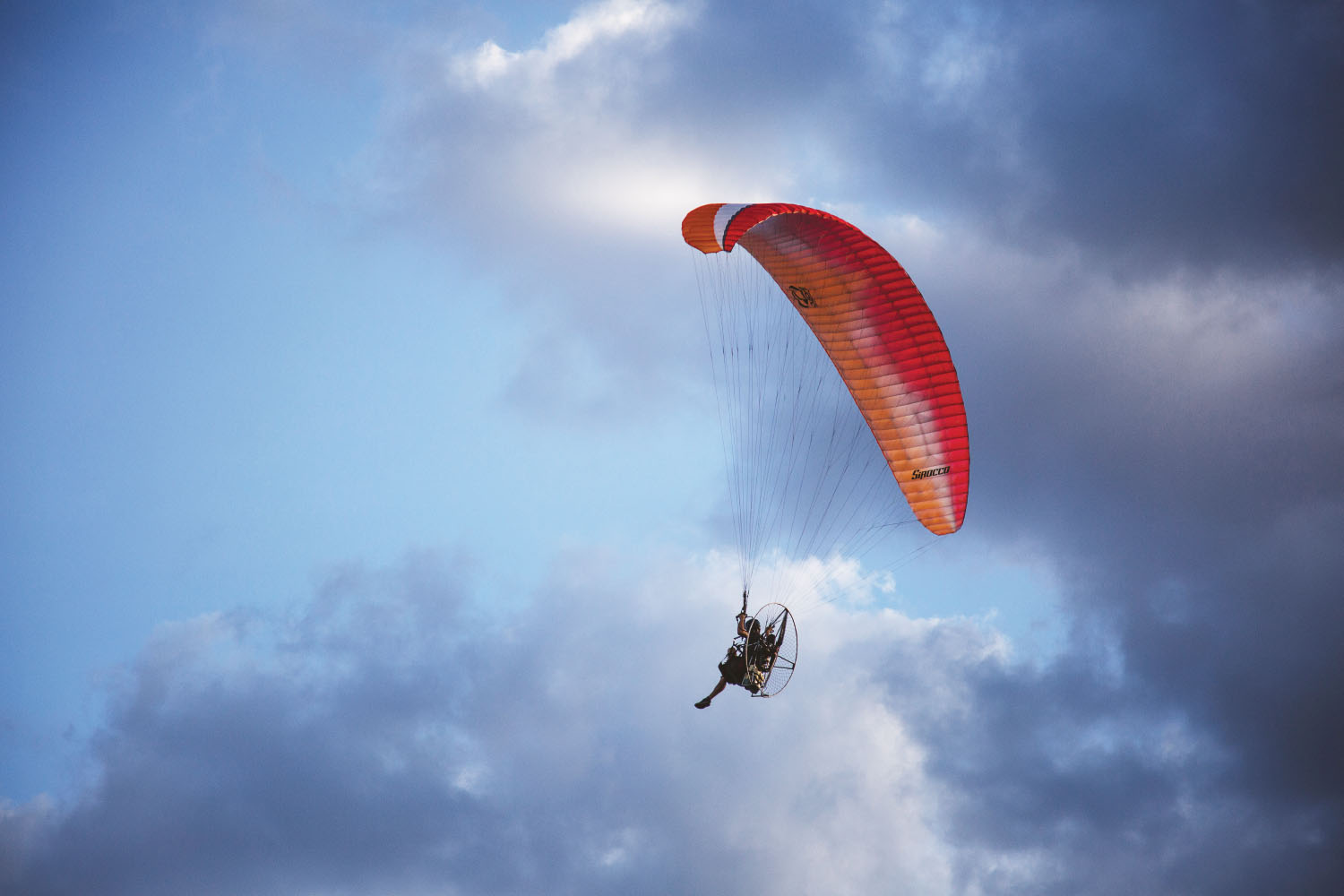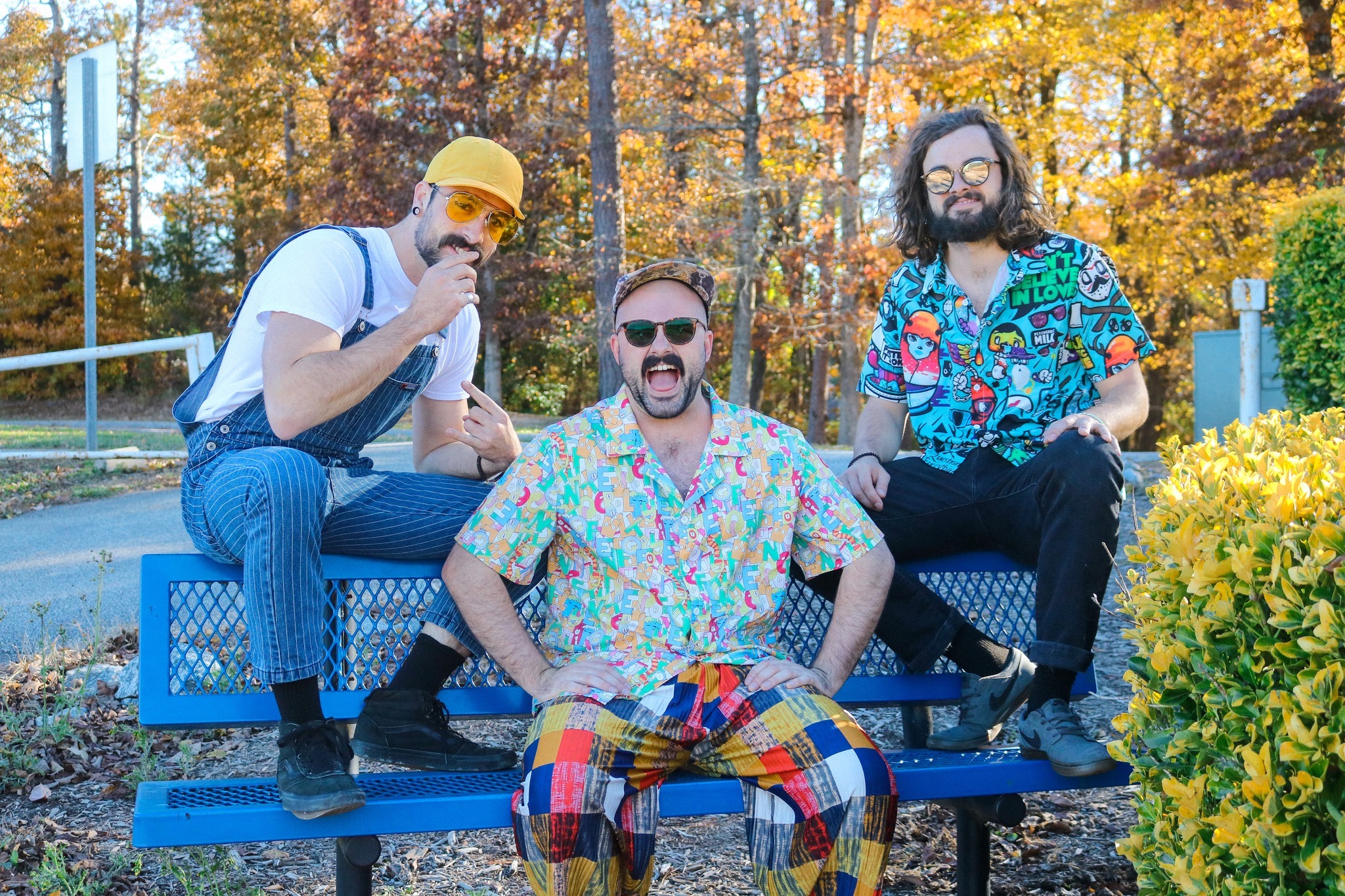
Elevation gains of up to 17,000 feet have been reported.
Photo by Rachel Pressley
Most 27-year-olds cannot say they take themselves flying thousands of feet into the air on a daily basis. But for Mark Huneycutt, it’s a different story. Since he was a young teenager, he’s been interested in aviation of all kinds.
He learned to fly at the Hendersonville Airport at age 16, instructed by the facility’s owner, John Hadok, and received his fixed-wing license there at 19. After studying mechanical engineering at NC State for four years, Mark decided to join the Army to become a pilot. He is now a Medevac Blackhawk helicopter pilot stationed at Fort Bragg in Fayetteville. But that’s not the only way he likes to fly.
In his free time — including back in Hendersonville when he visits his family — Huneycutt will paramotor from just about any field he can find. Paramotoring, similar to paragliding, occurs with the help of an engine and parachute that straps to your back. In paragliding, a person must jump off of a high-elevation hill or mountaintop, but paramotoring can be accomplished on flat ground by running into the wind with the engine on.
In fact, wind is a vital part of the sport — there has to be a headwind even to take off. The wind and steering functions provided by the attached wing and motor allow the pilot to control direction and height of flight. Most of the time, Huneycutt flies between 3,000-4,000 feet, but he often practices foot dragging, too. “I like to fly low,” he says. “Dragging my feet is fun. It’s really fun to be close to the ground.”

Mark Honeycutt in his gear after flying.
Photo by Rachel Pressley
However, using the power of wind combined with his Nitro 200 engine once took him to an astonishing 17,000 feet. “I just got the idea one day,” he says. “I was going to do a big cross-country trip following the Rio Grande, so I needed to test and see if the engine could climb to 14,000 feet. Once I was up there, I kept going until I felt the engine struggle a little.”
At this altitude, oxygen levels become depleted, causing hypoxia to set in. The feeling is often euphoric, but because of that, he knew he needed oxygen. “To get down, I did barrel rolls and wing rolls until I reached 1,000 feet. After coming down to this point, I was able to penetrate through the winds and get back home.”
Huneycutt is a popular member of the paramotoring community, with a YouTube following of more than 30,000. He likes to vlog his adventures to share his unique experiences. After Hurricane Florence, for instance, he was able to fly over the Cape Fear river in Fayetteville and document flooding in the area. “I saw houses that were deep in water, as well as a gas leak that I reported to officials,” he reveals.
Other times, Huneycutt will go up to explore, or just to take in the expansive views with friends. He has met fellow enthusiasts through paramotor fly-ins, and participates in events including the annual “Wings Over Winter,” typically held in a warm locale such as Florida, where flyers come from all over the U.S. to camp, socialize, and get in the air together. “Everyone knows the date,” says Huneycutt.
Flying in groups is common, although it takes plenty of coordination and communication practice. Once, Huneycutt even flew to Waffle House with a few friends. After eating, they took off together, watched by a small crowd.
“Aviation for Mark is like breathing,” exclaims Huneycutt’s 24-year old girlfriend, Alayna Dickerson. Through him, she’s found her own passion for paramotoring. Dickerson has been flying since July and uploads her own videos to YouTube. She documents learning experiences, new successes, and the lengthy list of challenges she has overcome, including conquering limitations related to physical size and strength — all in the hope of encouraging other women to try the sport.
“I’d say so far I feel like I learn something different every time I go up and fly,” says Dickerson. “It’s another level to pass on the way to making yourself a better pilot.”
Dickerson currently lives in Asheville, working at the Asheville Airport as a marshal for incoming and outgoing planes. “I think it’s really cool when women see other women doing things that predominantly men do,” says Dickerson. “It’s empowering even if some women don’t have a desire to fly. Women like to see other women succeed. Even men like to see other women fly.”

Alayna Dickerson and Mark Huneycutt after an evening of paramotoring at the Hendersonville airport.
Photo by Rachel Pressley
For more information about the Hendersonville Airport, see the facility’s Facebook page or call 828-693-1897. To watch videos of the story subjects’ flying experiences, visit YouTube.com and search for Mark Huneycutt and/or Alayna Dickerson.




I’m a newly certified paramotor pilot from Asheville and I’m looking forward to flying with Mark and Alayna real soon! Great article!